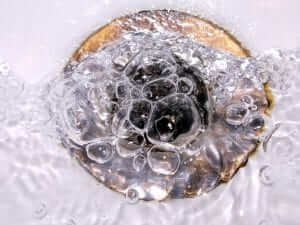Over time, the plumbing system in your home endures significant wear and tear. While most homeowners are diligent about regular maintenance, there comes a point when repairs are no longer enough. That’s when repiping and replacing your plumbing may be necessary to ensure your home’s safety and efficiency.
Together, we’ll explore the signs that indicate it’s time to replace your plumbing, the benefits of repiping your home, and how Mallick Plumbing & Heating’s home repiping services can help you maintain a modern, leak-free plumbing system.
When to Replace Plumbing in Your Home
Determining the right time to replace the plumbing in your home depends on a few factors.
Here’s a few key signs it may be time to consider a repipe:
-
Age of the Pipes: Plumbing systems are built to last, but even the best pipes have a lifespan. If your home is more than 50 years old and still has its original plumbing, it’s likely time to consider replacement. Older homes often have galvanized steel or cast-iron pipes, which are prone to corrosion and leaks over time.
-
Frequent Leaks: If you’re constantly dealing with leaks, no matter how small, this could be a sign that your plumbing system is deteriorating. While occasional leaks can be repaired, frequent leaks may indicate systemic problems that require a more comprehensive solution like repiping.
-
Discolored Water: Rust-colored or discolored water from your taps is a common sign of corroded pipes. This is especially true in homes with galvanized steel plumbing. Not only is discolored water unappealing, but it can also pose health risks.
-
Low Water Pressure: Low water pressure is often caused by sediment buildup or pipe corrosion that reduces water flow. If cleaning or temporary fixes don’t resolve the issue, it may be time to replace your pipes to restore proper water pressure.
-
Noisy Pipes: Rattling or banging noises in your pipes, particularly when turning water on or off, can indicate old or loose pipes. Over time, these issues can worsen, leading to leaks and water damage.
If you’re noticing any of these warning signs, it may be time to consider replacing your home’s plumbing. Mallick Plumbing & Heating can also help with proactive replacement. Call today at (301) 804-6759 to learn how we can assist you!
The Benefits of Repiping Your Home
Repiping your home is a significant investment, but it comes with a variety of long-term benefits that make it worthwhile.
Here’s why many homeowners are opting for home repiping services:
-
Improved Water Quality: Old, corroded pipes can leach contaminants like rust into your water supply. By repiping, you’ll enjoy clean, clear water without the risk of contamination from deteriorating pipes.
-
Increased Water Pressure: Repiping your home eliminates the blockages and corrosion that reduce water flow, leading to improved water pressure throughout your home. With new pipes, you’ll notice stronger, more consistent water flow from all your faucets and fixtures.
-
Reduced Risk of Leaks: Old plumbing systems are more prone to leaks, which can cause water damage and mold growth in your home. Repiping drastically reduces the risk of leaks, giving you peace of mind and protecting your property from potential water damage.
-
Increased Home Value: If you plan to sell your home in the future, new plumbing can be a major selling point for prospective buyers. A newly repiped home is seen as a valuable upgrade that can increase the market value of your property.
-
Energy Efficiency: Modern plumbing materials are more energy-efficient, which means repiping your home can lead to savings on your utility bills. For example, newer pipes retain heat better, which can reduce the amount of energy needed to heat your water.
Knowing when to replace plumbing in your home can save you from expensive repairs and water damage in the future. If you’ve noticed any of the signs that your plumbing system is deteriorating, don’t wait for the problem to escalate. Investing in home repiping services comes with numerous benefits, from improved water quality to enhanced property value.
To learn more about the benefits of repiping your home, check out our expert home repiping services at Mallick Plumbing & Heating or call us at (301) 804-6759 to learn more!
Why Choose Mallick Plumbing & Heating for Your Repiping Needs?
At Mallick Plumbing & Heating, we specialize in providing high-quality, reliable repiping services to homeowners. With our team of experienced plumbers, we can assess the condition of your plumbing system, determine if repiping is necessary, and carry out the job with minimal disruption to your home.
Contact us today to schedule a consultation and take the first step toward a safer, more efficient plumbing system.







